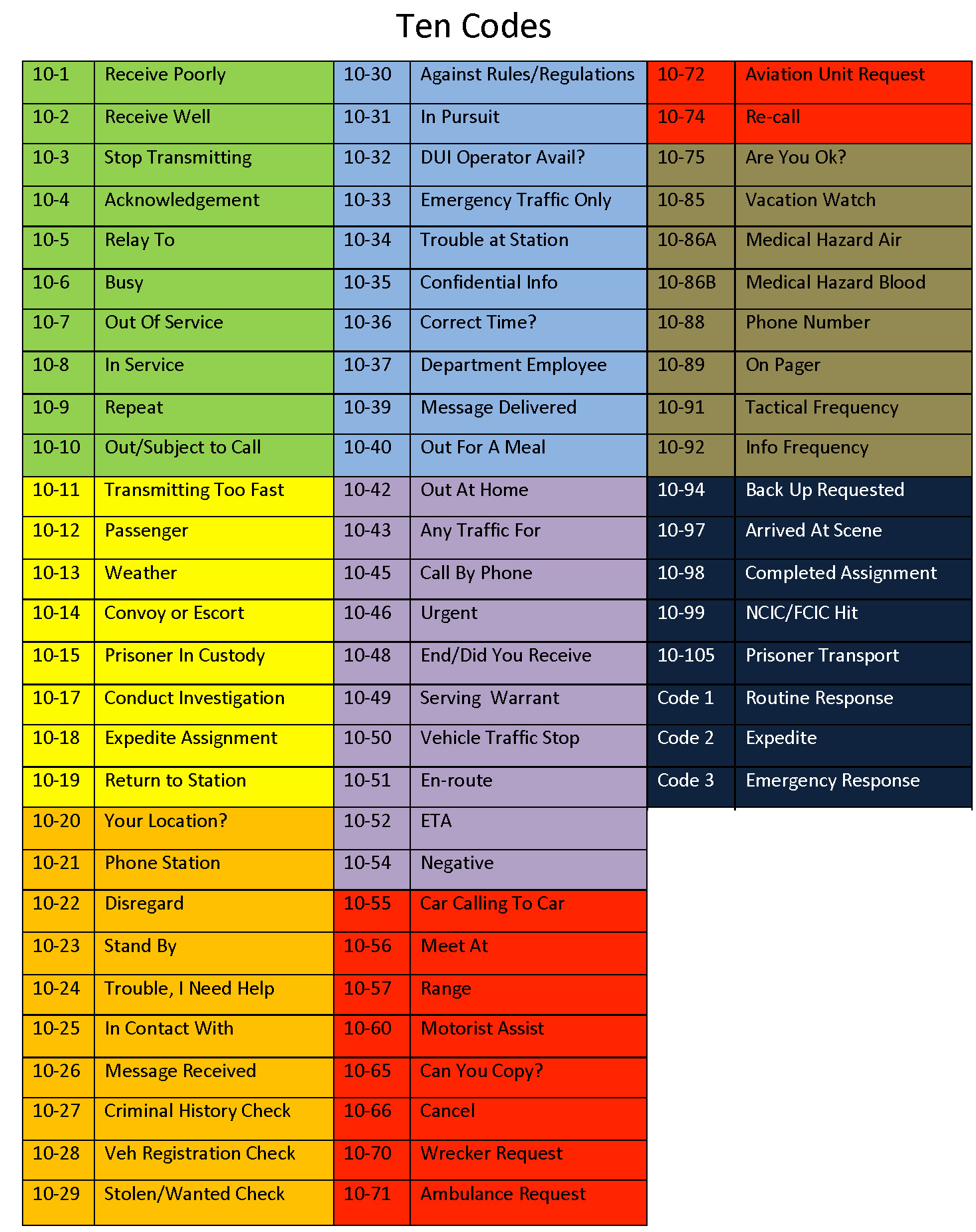The NYPD 10 codes, also known as ten signals, are a series of numerical codes used by law enforcement agencies, particularly the New York Police Department, to communicate succinctly and efficiently over the radio. These codes help officers convey important information quickly, ensuring that all personnel are aware of the situation without causing confusion. While the use of these codes can streamline communication, it can also be challenging for the public to understand their meanings, especially those who are unfamiliar with police lingo. This article delves into the world of NYPD 10 codes, exploring their significance, usage, and historical context.
As one of the largest police departments in the United States, the NYPD employs these codes to facilitate clear communication among its officers, ensuring quick responses to emergencies and incidents. The use of 10 codes dates back to the early 20th century, evolving as law enforcement agencies sought methods to enhance communication efficiency. Understanding the NYPD 10 codes can provide insight into the daily operations of the police force and the language that keeps the streets safe.
In this guide, we will explore various aspects of the NYPD 10 codes, including their origins, common codes used, and how they impact police work. Whether you're a curious citizen or an aspiring police officer, gaining knowledge about these codes can enhance your understanding of law enforcement communication.
What Are the NYPD 10 Codes?
The NYPD 10 codes consist of a series of numbers assigned to specific phrases or situations encountered by police officers. Each code corresponds to a particular action or piece of information, allowing officers to communicate effectively without lengthy explanations. For instance, the code "10-4" means "Acknowledged," while "10-20" is used to ask for a location.
Why Do Police Use 10 Codes?
Police departments utilize 10 codes to enhance clarity and speed during radio communications. This method reduces the chance of misunderstandings, which is crucial in high-pressure situations. The brevity of 10 codes allows for rapid exchanges of information, ensuring that officers can respond promptly to incidents as they arise.
How Did the NYPD 10 Codes Begin?
The origins of the NYPD 10 codes trace back to the 1930s when police departments sought standardized communication methods. The codes gained popularity and were widely adopted across various departments in the United States. Over the years, the NYPD has maintained and adapted its codes to meet the evolving needs of law enforcement and the communities they serve.
What Are Some Common NYPD 10 Codes?
Here are some of the most frequently used NYPD 10 codes:
- 10-1: Unable to copy, change location
- 10-4: Acknowledged
- 10-7: Out of service
- 10-8: In service
- 10-20: Location
- 10-22: Disregard
- 10-33: Emergency, all units stand by
- 10-99: Wanted/stolen indicated
How Are NYPD 10 Codes Used in Daily Operations?
In their daily operations, NYPD officers rely on the 10 codes to communicate effectively with each other and dispatchers. For instance, if an officer needs backup, they may use the code to indicate their status and request assistance without elaborating on the situation. This efficiency is particularly important when responding to emergencies, as time is often of the essence.
Are NYPD 10 Codes Universal?
While many police departments across the United States use similar 10 codes, they are not universal. Different jurisdictions may have their own variations, leading to potential confusion when officers from different areas interact. This inconsistency has prompted some departments to move towards plain language communication to ensure clarity across the board.
What Are the Pros and Cons of Using NYPD 10 Codes?
The use of NYPD 10 codes comes with both advantages and disadvantages. Here are some key points to consider:
- Pros:
- Enhances communication efficiency among officers.
- Reduces misunderstandings in high-pressure situations.
- Standardizes communication across the department.
- Cons:
- Can create confusion for the public who are unfamiliar with the codes.
- Inconsistencies between different jurisdictions can lead to misunderstandings.
- May be less effective in situations requiring detailed explanations.
How Can the Public Learn About NYPD 10 Codes?
For those interested in understanding the NYPD 10 codes better, various resources are available. Police departments often provide informational materials on their websites or through community outreach programs. Additionally, local libraries may house books and publications that explain police communication and the specific codes used by the NYPD.
Conclusion: The Importance of NYPD 10 Codes
In conclusion, the NYPD 10 codes play a vital role in the communication strategies of the New York Police Department. While they offer significant advantages in terms of efficiency and clarity, understanding these codes is essential for both law enforcement personnel and the general public. By familiarizing ourselves with the NYPD 10 codes, we can gain a deeper appreciation for the complexities of police work and the language that helps keep our communities safe.




